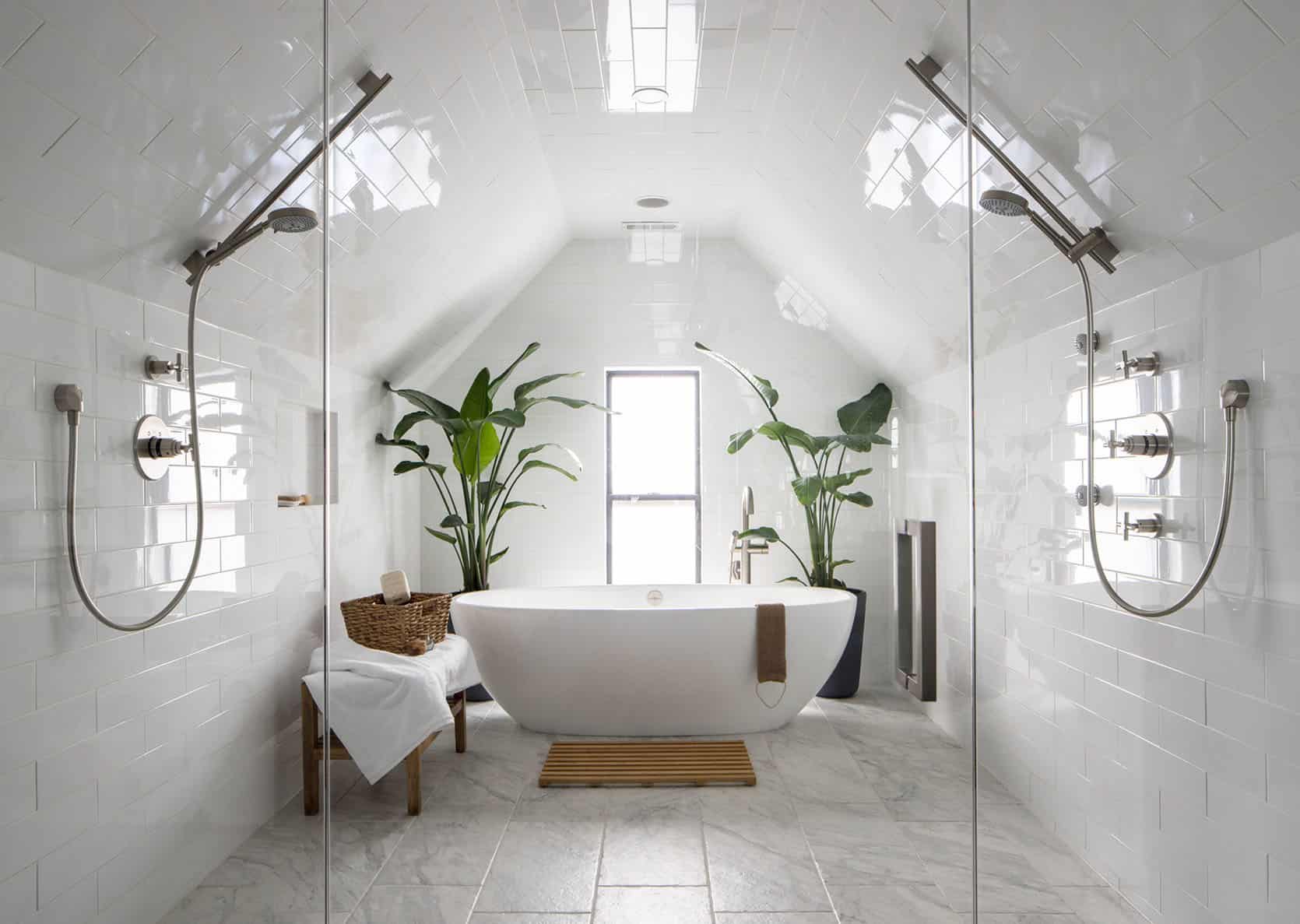Bathroom renovations are transformative projects that breathe new life into one of the most important spaces in our homes. Among the myriad decisions that homeowners must make, the choice between partial and full coverage for bathroom tiles stands out as a crucial one. This decision not only affects the visual appeal but also impacts the functionality and maintenance of the bathroom. In this comprehensive exploration, we will delve deeper into the great debate between partial and full coverage, dissecting the intricacies of each method to help you make an informed decision for your bathroom sanctuary.
1. Understanding Partial Coverage:
Partial coverage is characterized by the intentional placement of tiles with visible gaps between them, allowing a portion of the underlying substrate to show through.
This method is often associated with contemporary and eclectic designs, providing a distinct visual appeal. Common tile choices for partial coverage include mosaic and subway tiles, which thrive in this open and expressive environment.
2. Exploring Full Coverage:
In contrast, full coverage involves placing tiles close together, minimizing the visibility of gaps and ensuring a seamless, cohesive appearance. This method is often preferred for those seeking a more classic or traditional aesthetic.
The uniformity of full coverage provides an elegant and timeless backdrop for any bathroom design.
3. Aesthetics and Design Considerations:
Your choice between partial and full coverage should align with the overall aesthetic you envision for your bathroom. Partial coverage lends itself well to modern and eclectic designs, allowing for creativity and flair.
On the other hand, full coverage is a go-to choice for those desiring a timeless, sophisticated look that effortlessly complements various styles.
4. Grout Lines and Maintenance:
Grout lines play a pivotal role in both partial and full coverage installations. With partial coverage, the grout lines are more exposed, contributing to the overall design but also requiring more attention to maintenance.
Full coverage, with its minimized grout exposure, not only presents a sleek appearance but also simplifies the cleaning process, making it more accessible for homeowners.
5. Installation Challenges and Costs:
The installation process is a critical factor in the decision-making process. Partial coverage demands precision and meticulousness, which may translate to higher labor costs.
On the flip side, full coverage is generally considered faster and more straightforward, potentially reducing overall installation expenses. Understanding these differences is key to budgeting and planning accordingly.
6. Durability and Longevity:
Durability is a paramount concern in a space like the bathroom, where exposure to moisture is inevitable. Partial coverage, with its visible gaps, may expose the underlying substrate to water penetration, potentially leading to issues over time.
Full coverage, with fewer exposed areas, provides better protection against moisture damage, enhancing the longevity of the tiled surfaces.
7. Trends and Timelessness:
Considering current design trends versus timeless aesthetics is crucial in making a decision. While partial coverage might align with contemporary trends, full coverage offers a timeless backdrop that transcends fleeting fashions.
Consider your long-term vision for the bathroom and whether you prefer a design that stands the test of time.
8. Customization and Personalization:
Both partial and full coverage allow for creative expression, but the extent of customization may differ. Partial coverage offers more opportunities for unique patterns and designs, making it an excellent choice for those who want to personalize their space.
Full coverage, while more uniform, still provides room for creativity, especially with the use of larger format tiles and innovative layouts.
FAQs:
Q1: Which tiles are best for partial coverage?
A1: Mosaic and subway tiles are popular choices for partial coverage due to their smaller size and ability to create intricate patterns.
Q2: Does full coverage make a bathroom look smaller?
A2: Contrary to the perception that dark tiles can make a space look smaller, full coverage can create a seamless and cohesive look that may visually expand the space, making it appear larger.
Q3: Are grout lines more prone to mold in partial coverage?
A3: Yes, the increased visibility and accessibility of grout lines in partial coverage can make them more susceptible to mold growth if not properly maintained.
Q4: Is partial coverage more expensive to install?
A4: Partial coverage may be more labor-intensive, potentially leading to higher installation costs compared to the faster and more straightforward process of full coverage.
Q5: Can full coverage work with modern bathroom designs?
A5: Absolutely! Full coverage tiles can be used in modern designs, especially with larger format tiles that provide a sleek and contemporary appearance.
Q6: Does partial coverage allow for more design flexibility?
A6: Yes, partial coverage often allows for greater design flexibility, enabling homeowners to create unique patterns and focal points in their bathroom.
Q7: Which option requires less maintenance?
A7: Full coverage generally requires less maintenance as there are fewer exposed grout lines that can accumulate dirt and mold.
Conclusion:
Choosing between partial and full coverage for your bathroom tiles is a decision that requires a thoughtful balance of personal style, practical considerations, and long-term vision. Both methods have their merits, and the ultimate choice depends on your unique preferences and the specific requirements of your bathroom space. By weighing the pros and cons of each approach, you can embark on your bathroom renovation journey with confidence, knowing that your choice aligns perfectly with the functional and aesthetic goals you have set for your home.

A group of home improvement enthusiasts and bathroom design experts, combines in-depth knowledge and a shared passion to deliver engaging, informative content that guides readers through the world of bathroom innovation and style.

Leave a Reply